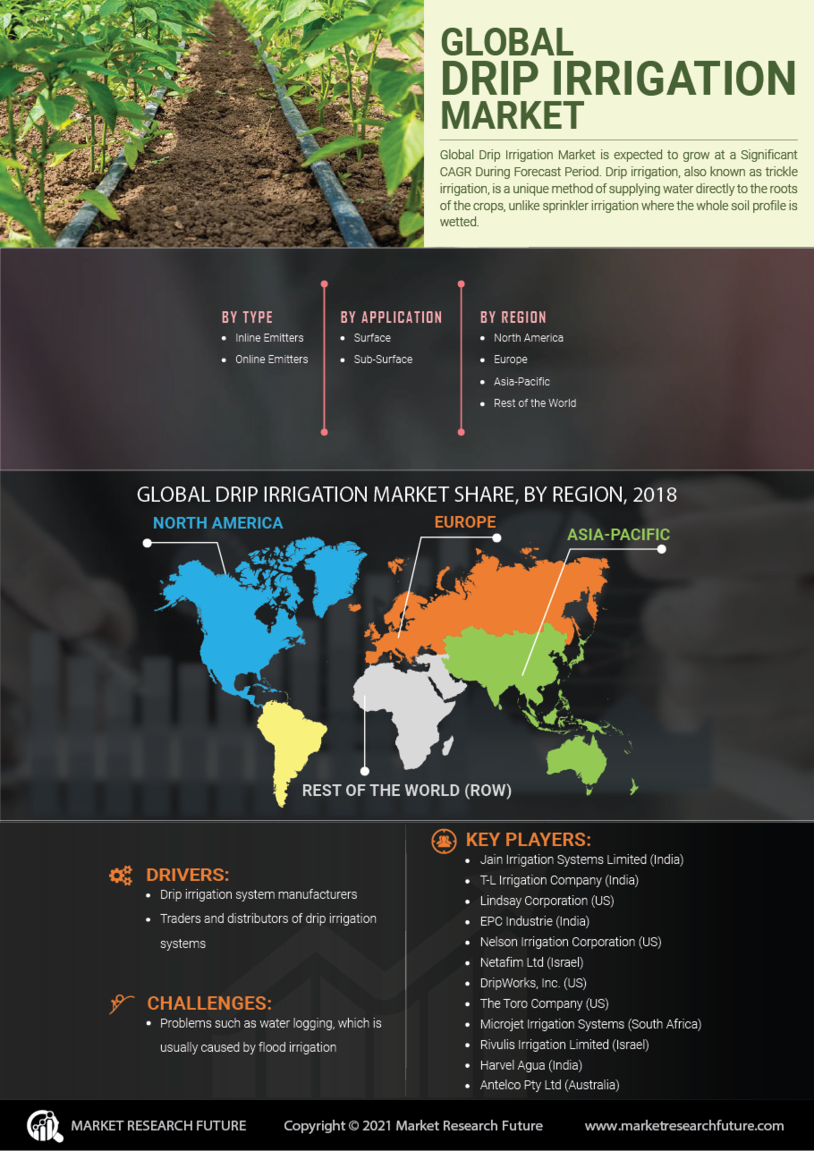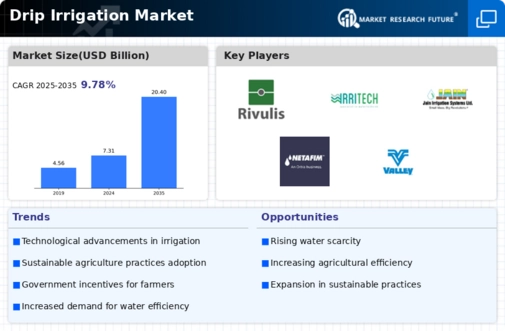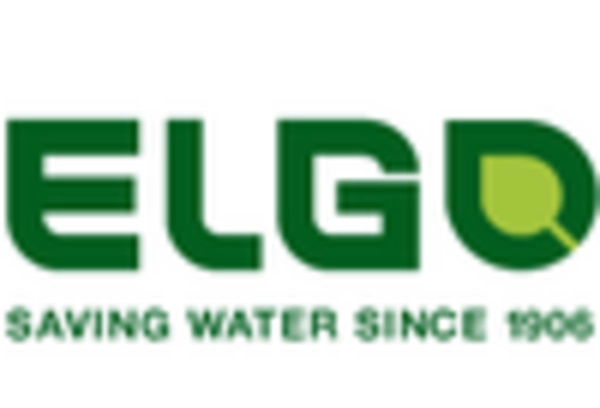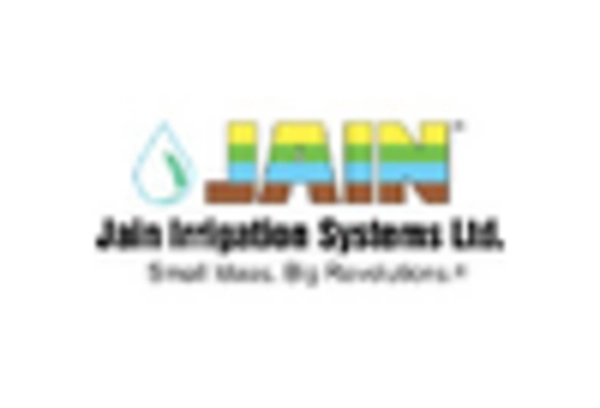Increasing Water Scarcity
The escalating issue of water scarcity is a pivotal driver for the Drip Irrigation Market. As populations grow and agricultural demands intensify, the need for efficient water usage becomes paramount. Drip irrigation systems, which deliver water directly to the plant roots, can reduce water consumption by up to 50% compared to traditional irrigation methods. This efficiency not only conserves water but also enhances crop yields, making it an attractive option for farmers facing water shortages. In regions where drought conditions are prevalent, the adoption of drip irrigation is likely to increase, thereby propelling the market forward. The urgency to address water scarcity issues is expected to drive investments in advanced irrigation technologies, further solidifying the role of drip irrigation in sustainable agriculture.
Rising Agricultural Productivity
The demand for higher agricultural productivity is a significant factor influencing the Drip Irrigation Market. Farmers are increasingly seeking methods to maximize crop yields while minimizing resource inputs. Drip irrigation systems facilitate precise water delivery, which can lead to improved plant health and higher productivity levels. According to recent studies, crops irrigated through drip systems can yield up to 30% more than those using conventional methods. This increase in productivity is particularly crucial in regions with limited arable land, where every inch counts. As agricultural stakeholders recognize the benefits of enhanced productivity, the adoption of drip irrigation is likely to expand, driving market growth and innovation in irrigation technologies.
Government Incentives and Support
Government policies and incentives play a crucial role in shaping the Drip Irrigation Market. Many governments are recognizing the importance of sustainable agricultural practices and are implementing programs to promote water-efficient irrigation systems. Financial incentives, such as subsidies and grants for farmers adopting drip irrigation, are becoming increasingly common. These initiatives not only alleviate the initial investment burden but also encourage the transition to more sustainable farming practices. In some regions, government-backed training programs are also being established to educate farmers on the benefits and operation of drip irrigation systems. As these supportive measures continue to evolve, they are likely to stimulate market growth and enhance the adoption of drip irrigation technologies.
Technological Innovations in Irrigation
Technological advancements are reshaping the Drip Irrigation Market, introducing innovative solutions that enhance system efficiency and user experience. The integration of smart technologies, such as sensors and automated controls, allows for real-time monitoring and management of irrigation systems. These innovations enable farmers to optimize water usage based on soil moisture levels and weather conditions, leading to more sustainable practices. The market for smart irrigation technologies is projected to grow significantly, with estimates suggesting a compound annual growth rate of over 15% in the coming years. As these technologies become more accessible, they are likely to drive the adoption of drip irrigation systems, further transforming agricultural practices.
Growing Awareness of Sustainable Practices
The rising awareness of sustainable agricultural practices is a key driver for the Drip Irrigation Market. As consumers become more conscious of environmental issues, there is a growing demand for food produced through sustainable methods. Drip irrigation is recognized for its ability to conserve water and reduce chemical runoff, aligning with the principles of sustainable agriculture. This awareness is prompting farmers to adopt drip irrigation systems as a means to meet consumer expectations and regulatory requirements. Furthermore, the increasing focus on organic farming and environmentally friendly practices is likely to bolster the demand for drip irrigation solutions. As sustainability becomes a central theme in agriculture, the market for drip irrigation is expected to expand significantly.


















Leave a Comment